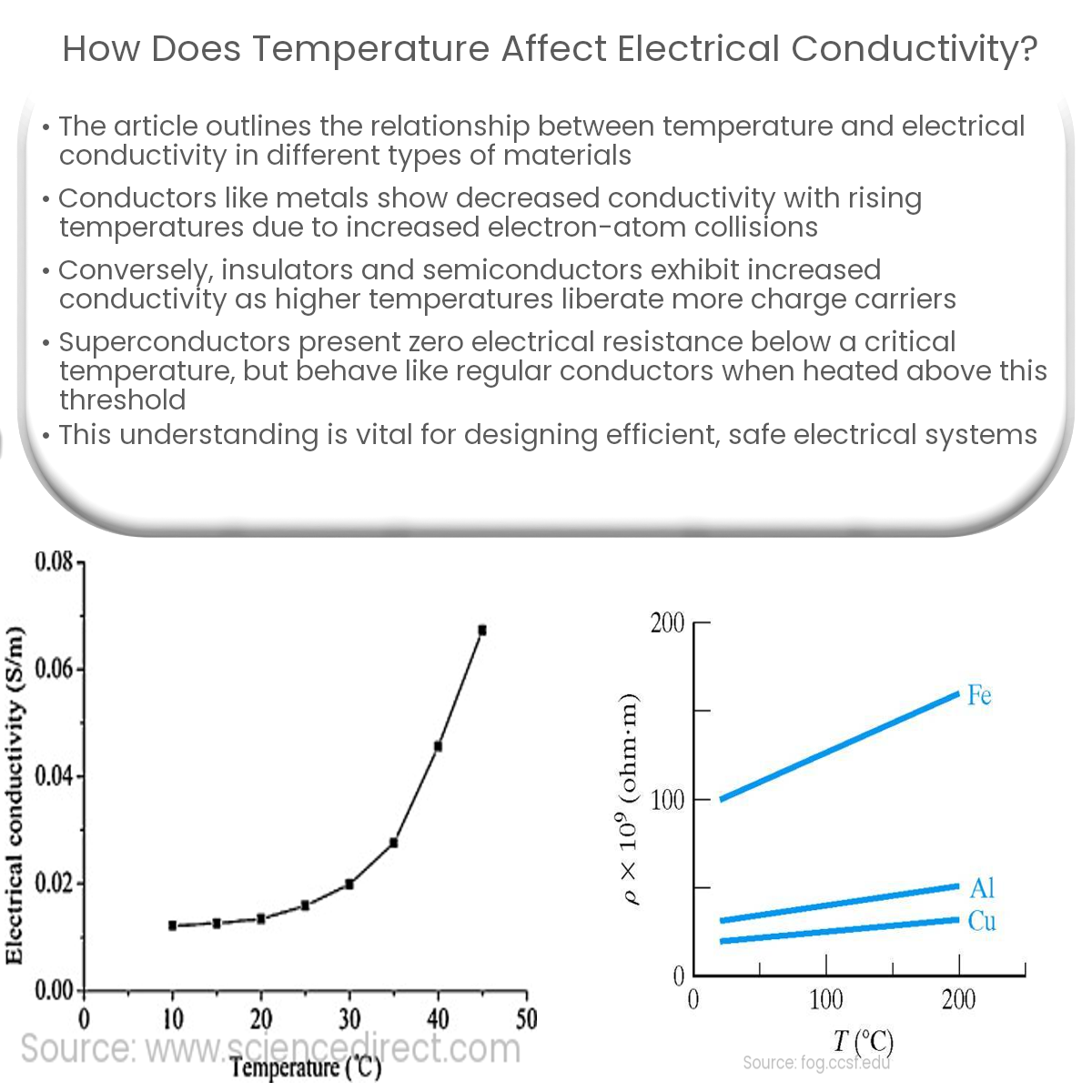Temperature affects conductivity differently: in metals, it decreases with rising temperature, while in semiconductors and insulators, it increases.
Temperature Effects on Electrical Conductivity
Temperature is a key factor that influences the electrical conductivity of materials. The effect of temperature on conductivity varies depending on the type of material, including metals, semiconductors, and insulators. This article will explore the impact of temperature on the electrical conductivity of these materials.
Metals
For most metals, electrical conductivity decreases with increasing temperature. The primary reason for this behavior is the increased thermal vibrations of the metal lattice. As temperature rises, atoms in the metal lattice vibrate more vigorously, which impedes the movement of electrons and increases the material’s electrical resistance. Consequently, the electrical conductivity decreases.
Examples of metals with high electrical conductivity that exhibit this behavior include copper, silver, and aluminum. These metals are commonly used in electrical wiring, power transmission lines, and electronic components.
Semiconductors
Semiconductors, such as silicon and germanium, exhibit an increase in electrical conductivity with increasing temperature. In semiconductors, the electrical conductivity is governed by the number of charge carriers (electrons and holes) available for conduction. As the temperature increases, more electrons are excited from the valence band to the conduction band, creating more charge carriers and increasing conductivity.
The relationship between temperature and electrical conductivity in semiconductors is often described by the Arrhenius equation, which relates the conductivity to the activation energy required for charge carriers to participate in conduction.
Insulators
For insulating materials, such as glass, rubber, and certain polymers, electrical conductivity generally increases with increasing temperature. Similar to semiconductors, the increase in conductivity is due to the generation of more charge carriers at higher temperatures. However, insulators still maintain significantly lower conductivity compared to metals and semiconductors, even at elevated temperatures.
Practical Implications
The temperature dependence of electrical conductivity has practical implications in various applications, including:
- Electrical Wiring: The increased resistance of metals at high temperatures can lead to power loss and reduced efficiency in electrical systems. Proper thermal management and material selection are crucial to minimize these effects.
- Semiconductor Devices: Temperature changes can impact the performance of electronic devices, such as transistors and integrated circuits. Understanding the temperature dependence of semiconductors is vital for designing reliable electronic systems.
- Thermoelectric Materials: Some materials exhibit a unique combination of electrical and thermal properties, making them suitable for thermoelectric applications, such as power generation and cooling systems. Understanding the relationship between temperature and conductivity is essential for optimizing these materials.
In conclusion, temperature significantly affects electrical conductivity, with different behaviors observed for metals, semiconductors, and insulators. Knowledge of these temperature effects is crucial for selecting appropriate materials and designing reliable electrical and electronic systems.


